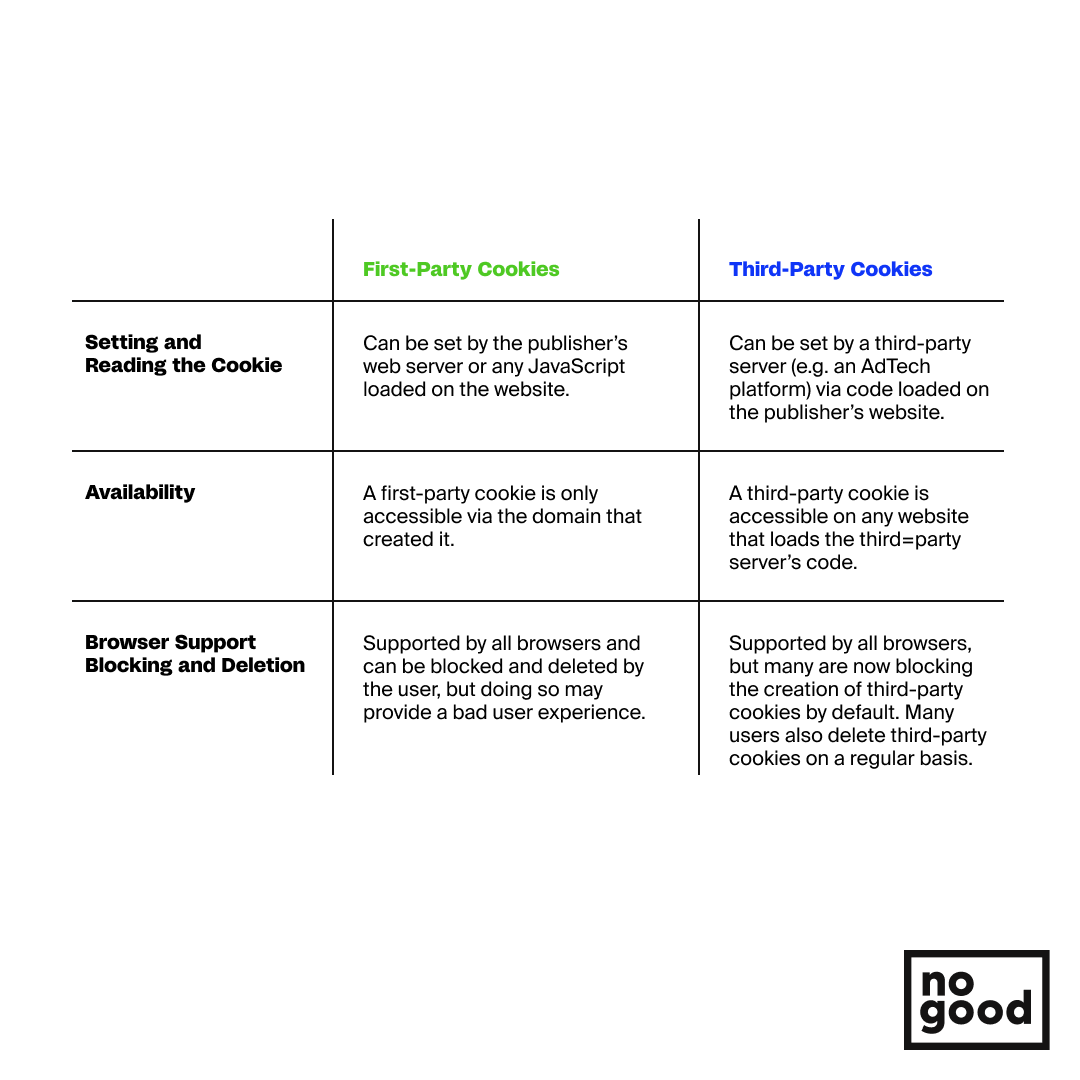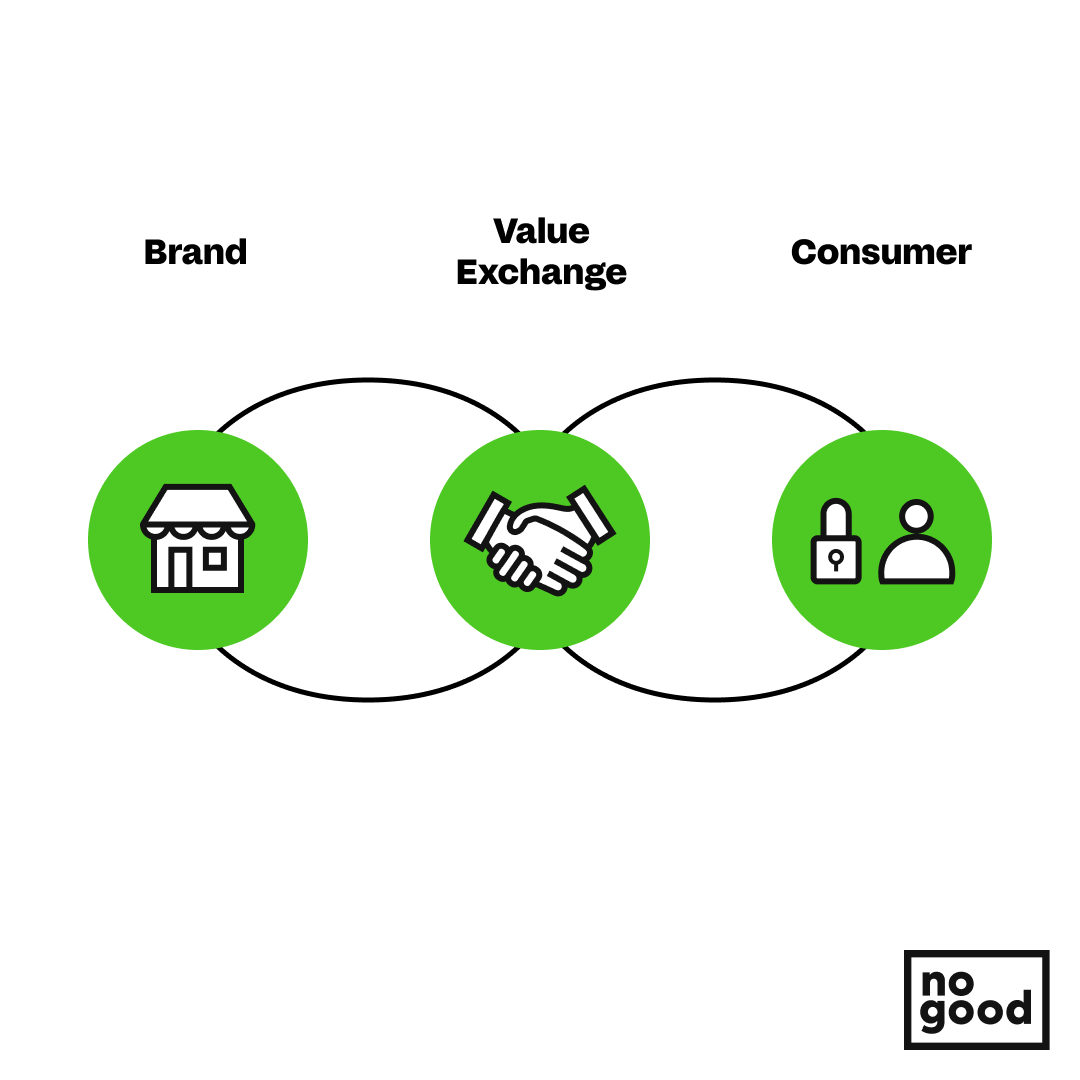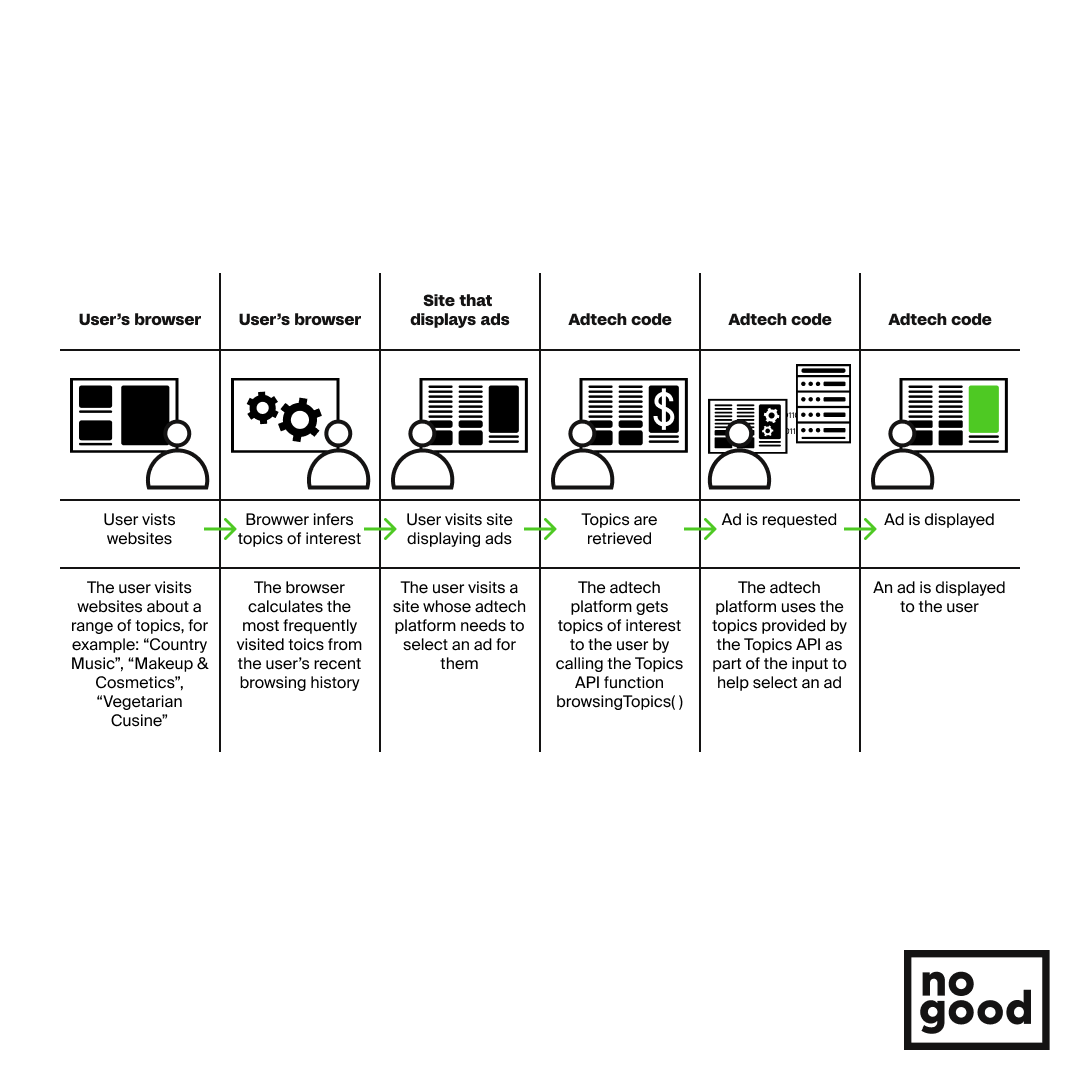Google has announced they’ll get rid of the third-party cookies from the world’s biggest browser, Chrome, by late 2023. Even though this shift was forthcoming as users became more concerned about how their personal data is being collected and used, many marketers find themselves worried about how to navigate this upcoming reality. As a matter of fact, Apple has already prohibited unauthorized third-party cookies on its Safari web browser and Firefox had already applied user protection rights years ago. Chrome with its 63% worldwide coverage will definitely have a deciding role in shaping new standards in this new cookieless future.
Before we dive into it, let’s first have a look at the marketing landscape we’ve known for years — which has been largely reliant on the usage of cookies.
What are Website Cookies?
HTTP cookies are small blocks of data that are used to identify your activity as you browse the Internet. Cookies are placed on your device to help the browsers and website owners monitor your online behavior. They are built specifically to track, personalize, and save your activity while you surf the net.
What Is Cookie-Based Marketing?
Cookie-based marketing is also commonly referred to as:
- Cookie marketing
- Cookie-based tracking
- Cookie tracking
- Cookie-based advertising
- Cookie advertising
- Cookie-based targeting
- Cookie targeting
It lets the website holders collect the necessary data to better understand and target their website visitors to convert them down the marketing funnel. In that instance, we’re referring to the first-party cookies or first-party data.
It’s the data owned by the website in order to improve the user experience. Once a user leaves the website, their data is no longer tracked by first-party cookies.
If you’re a digital marketer, you can breathe easily as zero- and first-party cookies will remain intact since Google sees the first-party relationships as ‘vital’. The second-party cookies, which basically are first-party data of a trusted partner, will also remain untouched.
The browser cookies could also be shared with third parties which later aggregate, segment, and resell the data to companies for their own marketing use. Which is what we know as third-party data. An example of this would be Chrome collecting user data to later offer detailed targeting options to Google Ads advertisers. These advertising targeting cookies are more relevant to the users as they are based on their interests.
Though they have historically provided the companies with an abundance of information to drive relevant traffic and user acquisition at scale — third-party cookies are soon to be phased out.

With current privacy regulations and big tech stepping in to guard customer data, the death of third-party data is imminent. It will be increasingly difficult for companies to drive acquisitions the old way. As the marketing space gets disrupted, marketers need to find new ways to effectively reach new customers.
How to Prepare for a Cookieless Future
Will the Extinction of Third-Party Cookies Force Marketers to Replace Our Proven Marketing Strategies? Not exactly. Users still crave to connect with the brands they admire, but not in an imposed, non-transparent way. It’s a challenge and an opportunity at the same time for businesses to build a new trustworthy form of relationships with their customers, in which users would willingly consent to share their information in an exchange for a greater value.
What has to change is the way we approach user targeting. We will largely rely on the probabilistic data instead of the cross-site user data provided by 3rd-party cookies.
11 Tactics for a Cookieless World
1. Utilize 3rd-Party Data While Still Possible
Gain relevant insights into your target audience using the 3rd-party cookies to find effective ways for developing your first-party data strategy to mitigate the effects of losing that data.
2. Take Advantage of Zero- and First-Party Data to Build Close and Direct Relationships with Customers
First-party data is the information a company collects directly and owns from its customer. It gives you insights from analytics and user behaviors. It can complement, enrich, and reduce the need for other types of data. This data is entrusted directly by a user in exchange for a product or service of great quality.
According to Sean Johnston, VP of Digital Advertising, “…the value of first-party data – and specifically, the means to integrate it with advertising networks – is going to be the key to maintaining and improving digital marketing efforts.”
3. Use Market Intelligence to Support Your Strategic Decisions
Instead of relying on 3rd-party cookies, find other ways of collecting user data upon which you will be able to make educated targeting decisions. By integrating customer data from all touchpoints you’ll be able to understand the entire user journey, not just one part of it, and improve the overall marketing performance.
Using 1P will help you map the customer journey, improve the targeting, monitor unique customers across different channels, close the loop on the attribution and deliver an individualized user experience leading to higher customer satisfaction.
Some of the sources of first-party data include:
- Implementing a CRM for a unified customer journey
- Using heat maps and session replay software to analyze the users’ website behavior
- Use Firebase to collect the mobile app engagement data
- Prepare a mailing campaign and monitor the open rates
- Send SMS communication
- Gather the information via call centers
For example, you could run a paid media campaign in which you’d target the top of the funnel based on your best-performing client’s segments, run a lookalike campaign based on people on your customers list, and use an analytics tool integration with your advertising platform to create real-time updated user audiences to target them in detailed retargeting campaigns.
4. Establish Trust and Brand Credibility by Offering an Added Value in Exchange for Users’ Data Consent
You may not be able to track third-party cookies, but you will still have access to your own first-party data. Collecting data from direct-to-consumer channels will not only give you a more profound insight into who your visitors are, but will also provide higher transparency to your customers, which would have a positive impact on trust and customer loyalty. At the same time if you are asking a customer to share their data with your business then you need to genuinely offer them an added value in return when they come to you.
A good example here would be developing a loyalty program where customers are invited and are rewarded with discounts, deals, credits, etc. Another idea would be running satisfaction surveys or social media polls in an exchange for an augmented service or sharing an exclusive piece of content for an email address.

5. Use Anonymous Targeting
With anonymous targeting, you won’t have a need to identify each person. Instead, there are other solutions like contextual or aggregated targeting which enable advertisers to target specific audiences anonymously.
6. Contextual Paid Media Marketing
Another marketing strategy to test out is contextual marketing. While third-party data lets you place ads directly in front of people who match specific user profiles, contextual advertising allows you to place paid media ads on specific websites which show up for similar keyword queries as your ads. Such PPC ad placements are less intrusive as they protect users’ privacy. They also allow reaching a broader audience around a particular subject.
7. Maximize Your First-Party Data Collection with Interactive Content
Giving a user an opportunity to interact and build their own narrative can help to build trust. Even marketing towards different buyer personas could be targeted with a multitude of formats, enabling and encouraging engagement.
Some ideas would include:
- landing pages
- infographics
- videos
- quizzes
Quizzes are a great way to segment the users into different buckets and determine their readiness to convert. It also can let you get the answer about users’ location, motivation, background, etc.
You could also build an interactive landing page with elements inviting the visitors to play with its components — increasing the likelihood of conversion.
8. Give The Customer a Full Ownership Over Their Data
Get explicit consent from a user to use their data. This can come as a pop-up or login screen when a user enters a site and views the content. Let the users unsubscribe or opt out whenever they want.
9. Start Account-Based Marketing
Forget about cookies, focus on a direct connection. ABM lets you find the specific audience you’re looking for and focuses your efforts on creating and delivering highly personalized messaging that resonates with your target audience. ABM is usually owned by both sales and marketing which work together to create the ideal buyer, plan, and deliver multi-touch messaging to them.
10. Optimize Your Analytics Setup
Audit your tech stack to find out whether different analytical tools are working together. Begin with these two:
- Customer Relationship Management (CRM) – In order to avoid looking at your first-party data in a silo, choose a proper tool to monitor different cross-channel data in one place. Make sure the user data is clean, up-to-date, and properly segmented.
- User Experience & User Interface (UX & UI) – Understand how users interact with your website or application, what is working well and what needs improvement to improve your CRO.
11. Monitor What Will Happen Next
At the beginning of the year, Google announced a change in its project meant to replace the cookies with interest-based advertising. Topics API will take the place of the initially planned Federated Learning of Cohorts (FLoC).
Topics as a part of a wider Privacy Sandbox will work by collecting user interests as they browse the internet and categorize users based on their broad interests. Every website will be assigned an overall category, so later Chrome could determine each user’s five top ‘topics’. Each person’s data will then be held for three weeks and stored within the user’s browser.

The implications of the Topics API for advertisers are still unclear, so we will have to monitor how Google’s plans will evolve before third-party cookies are fully sunset at the end of 2023.
Take Your First Steps Now
Mitigate the effect of future cookie governance on your marketing efforts by brainstorming some of the above-mentioned strategies to reach your audience instead of using cookies, ultra-targeted ads, or aggregated third-party data. Diversify your marketing strategies today to become less reliant on the phasing out of third-party cookie technology tomorrow.






